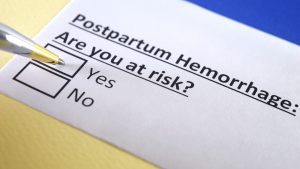A study led by Columbia researchers shows that a new intrauterine device can rapidly control postpartum haemorrhage, a major cause of severe maternal morbidity and death.
Overall, the device succeeded in controlling postpartum haemorrhage in 93% of patients who had natural deliveries and 84% who delivered by caesarean.
“Our findings show that the device is an important new tool in managing postpartum bleeding,” stated Dena Goffman, MD, professor of obstetrics and gynaecology at Columbia University and senior author of the study.
“We had previously shown that the device worked well with patients who were experiencing relatively minor bleeding, so it’s really reassuring to see that the device worked almost as well among a wider range of patients and when used by many different doctors.”
The results of the study were published in Obstetrics & Gynaecology.
Postpartum haemorrhage is a major cause of death
Shortly after birth and delivery of the placenta, the uterus contracts and closes off the blood vessels that nourish the placenta.
Failure of the uterus to contract after delivery can result in prolonged and excessive blood loss, which may necessitate blood transfusions, ICU admission, or surgery to try to stop the bleeding.

Goffman explained: “Less than 10% of people who give birth will experience a postpartum haemorrhage, but when it happens, it can get serious really fast.
The new device is highly effective in real-world conditions
The study was carried out on more than 800 patients giving birth at 16 hospitals.
It was designed to study the effectiveness of the new device when used outside of a tightly controlled clinical trial setting.
Median blood loss from a postpartum haemorrhage was higher before the device was used, reflecting a greater range in blood loss. Most patients had been treated with medications to manage postpartum bleeding prior to device insertion.
Treatment with the new device was successful in 93% of patients who had a natural birth and 84% of patients who had a caesarean birth.
Overall, the device brought bleeding under control within five minutes or less for most patients.
Future uses of the research
The researchers concluded that early recognition of postpartum haemorrhage and timely intervention are crucial in managing the condition and preventing potentially life-threatening complications.
Additional studies comparing the new device with other treatments for postpartum haemorrhage are being planned to determine if using the device earlier produces better outcomes.
“Until we have more data, we’re using the new intrauterine device after medications have been tried,” Goffman said.
“But for patients with underlying conditions who cannot be treated with one or more of our available medications, the device is a critically important tool to have.”









